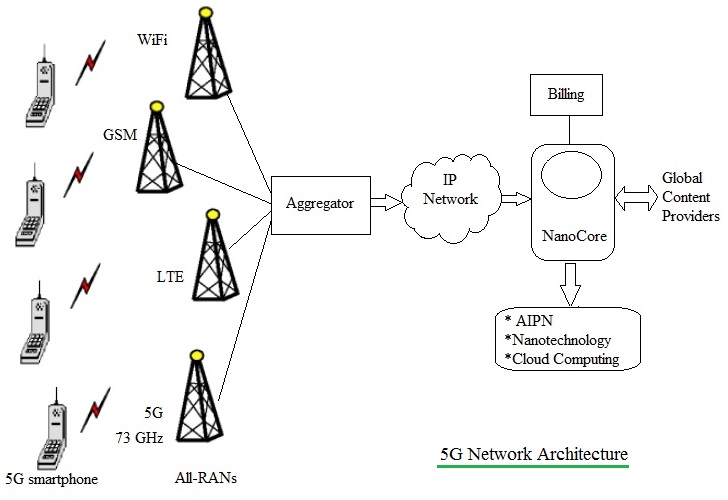The rollout of 5G technology promises to deliver faster speeds, lower latency, and more reliable connectivity than previous generations of wireless technology. But what makes 5G different, and how does it achieve these improvements?
To understand the technical side of 5G, we need to start with its network architecture.
5G Network Architecture
The 5G network is designed to be more flexible and adaptable than previous generations of wireless technology. To achieve this, the 5G network is built around three main components:
Radio Access Network (RAN): This is the part of the network that connects user devices (such as smartphones) to the core network. The RAN is made up of small cells, which are placed closer together than in previous generations of wireless technology. This allows for more efficient use of spectrum and enables faster data transfer speeds.
Core Network: This is the part of the network that handles the processing and routing of data. The 5G core network is designed to be more flexible and scalable than previous generations, enabling new services and applications to be added more easily.
Management and Orchestration: This component is responsible for managing and optimizing the network. It uses machine learning and artificial intelligence to optimize network performance and ensure that resources are used efficiently.
Technologies Used in 5G
Several key technologies are used in the 5G network to achieve its improvements in speed, latency, and reliability. These include:
Millimeter Wave (mmWave): This technology uses higher frequency radio waves to enable faster data transfer speeds. However, these high-frequency waves have a shorter range than lower-frequency waves, which means that more small cells are needed to cover a given area.
Massive MIMO (Multiple-Input Multiple-Output): This technology uses multiple antennas to enable faster data transfer speeds and better network coverage. By using more antennas, the network can send and receive more data simultaneously, improving efficiency and reducing interference.
Network Slicing: This technology allows for the creation of virtual networks within the 5G network. Each virtual network can be customized to meet the needs of a specific application or service, enabling greater flexibility and efficiency.
Edge Computing: This technology moves processing and storage closer to the user, reducing latency and enabling faster response times. With edge computing, data is processed at the edge of the network (in the RAN), rather than being sent back to the core network for processing.
In conclusion, the technical side of 5G is complex, but the architecture and technologies used in the 5G network are designed to enable faster speeds, lower latency, and more reliable connectivity. With the rollout of 5G technology continuing to expand worldwide, we can expect to see even more innovative applications and services emerging as the full potential of 5G is realized.






